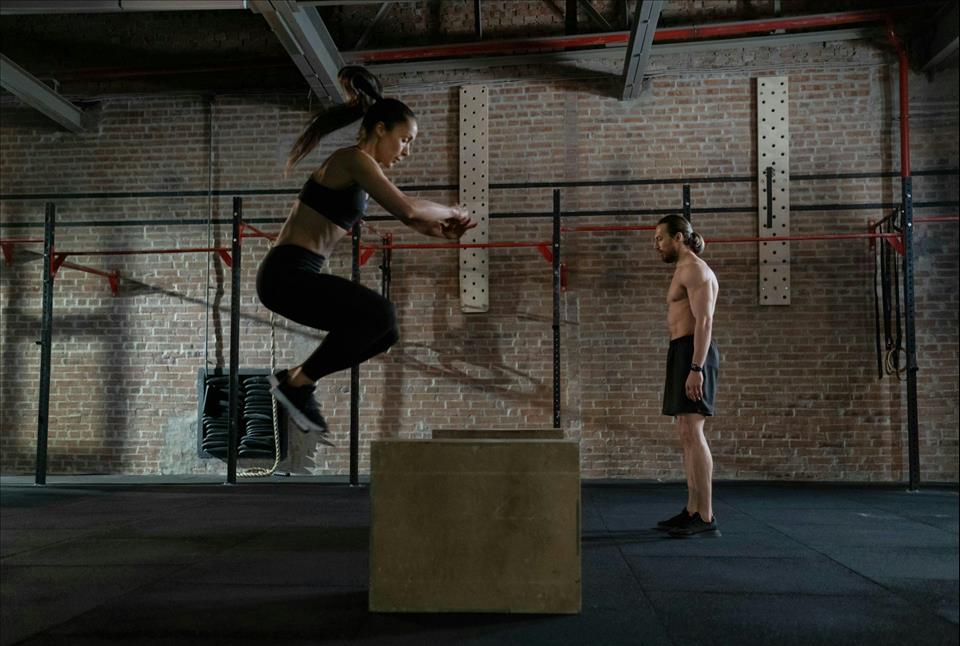
What Are Plyometric Exercises? How All That Hopping And Jumping Builds Strength, Speed And Power
Examples include:
-
box jumps , where you repeatedly leap quickly on and off a box
lateral skater hops , where you bound from side to side like a speeding ice skater
rapidly throwing a heavy medicine ball against a wall , or to the ground
single leg hops, which may involve hopping on the spot or through an obstacle course
squat jumps, where you repeatedly squat and then launch yourself into the air.
There are many more examples of plyometric exercises .
What ties all these moves together is that they use what's known as the“stretch shortening cycle”. This is where your muscles rapidly stretch and then contract.
Runners routinely practise plyometric exercises to improve explosive leg strength. WoodysPhotos/Shutterstock Potential benefits
Research shows incorporating plyometric exercise into your routine can help you:
-
jump higher
sprint faster
reduce the chances of getting a serious sporting injuries such as anterior cruciate ligament (ACL) tears
build muscle strength
improve bone mineral density (especially when combined with resistance training such as weight lifting), which is particularly important for women and older people at risk of falls.
Studies have found plyometric exercises can help:
-
older people who want to retain and build muscle strength, boost bone health, improve posture and reduce the risk of falls
adolescent athletes who want to build the explosive strength needed to excel in sports such as athletics, tennis, soccer, basketball and football
female athletes who want to jump higher or change direction quickly (a useful skill in many sports)
endurance runners who want to boost physical fitness, run time and athletic performance.
And when it comes to plyometric exercises, you get out what you put in.
Research has found the benefits of plyometrics are significantly greater when every jump was performed with maximum effort .
Jumping can help boost bone strength. WoodysPhotos/Shutterstock Potential risks
All exercise comes with risk (as does not doing enough exercise!)
Plyometrics are high-intensity activities that require the body to absorb a lot of impact when landing on the ground or catching medicine balls.
That means there is some risk of musculoskeletal injury, particularly if the combination of intensity, frequency and volume is too high.
You might miss a landing and fall, land in a weird way and crunch your ankle, or get a muscle tear if you're overdoing it.
The National Strength and Conditioning Association, a US educational nonprofit that uses research to support coaches and athletes, recommends :
-
a maximum of one to three plyometric sessions per week
five to ten repetitions per set and
rest periods of one to three minutes between sets to ensure complete muscle recovery.
With the right guidance, jumps can be safe for older people and may help reduce the risk of falls as you age. Realstock/Shutterstock
One meta-analysis , where researchers looked at many studies, found plyometric training was feasible and safe, and could improve older people's performance, function and health.
Overall, with appropriate programming and supervision, plyometric exercise can be a safe and effective way to boost your health and athletic performance.

Legal Disclaimer:
MENAFN provides the
information “as is” without warranty of any kind. We do not accept
any responsibility or liability for the accuracy, content, images,
videos, licenses, completeness, legality, or reliability of the information
contained in this article. If you have any complaints or copyright
issues related to this article, kindly contact the provider above.


















Comments
No comment